You’ll discover how to transform your living spaces with nine distinct plant decoration concepts that create lasting elegance. From soaring vertical gardens that maximize small areas to precisely trimmed topiaries that add formal refinement, these design approaches combine nature with sophisticated styling. Whether you’re working with a compact apartment or spacious home, these time-tested plant arrangements offer proven solutions that elevate your interior design while maintaining visual harmony.
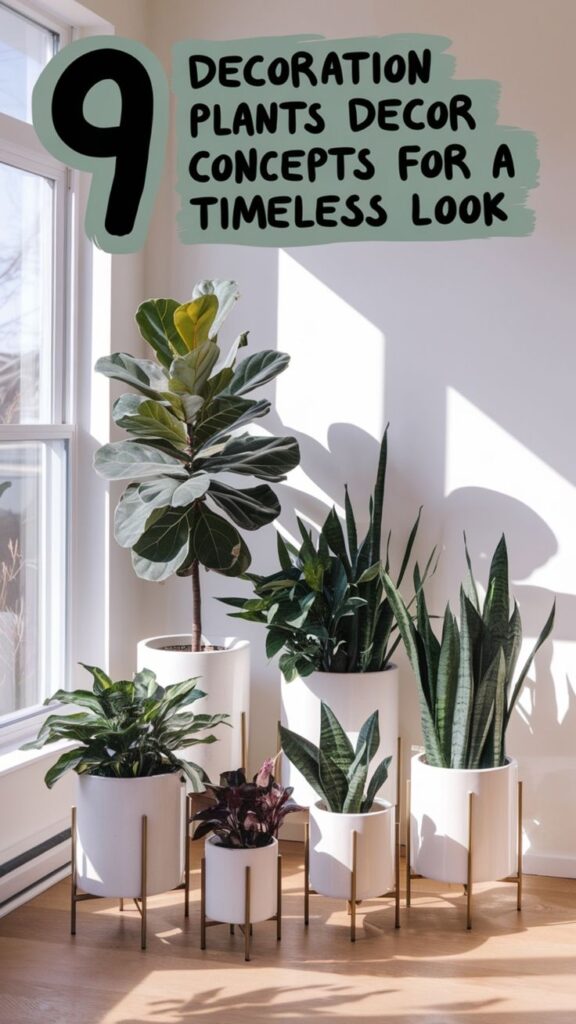
Contents
- 1 Vertical Garden Walls for Elegant Living Spaces
- 2 Minimalist Plant Arrangements With Clean Lines
- 3 Classic Topiary Designs for Formal Settings
- 4 Mixed Height Plant Groupings for Visual Interest
- 5 Statement Plants as Natural Focal Points
- 6 Hanging Gardens With Trailing Botanicals
- 7 Window Ledge Plant Collections
- 8 Symmetrical Plant Placement for Balance
- 9 Indoor Trees as Architectural Elements
Vertical Garden Walls for Elegant Living Spaces
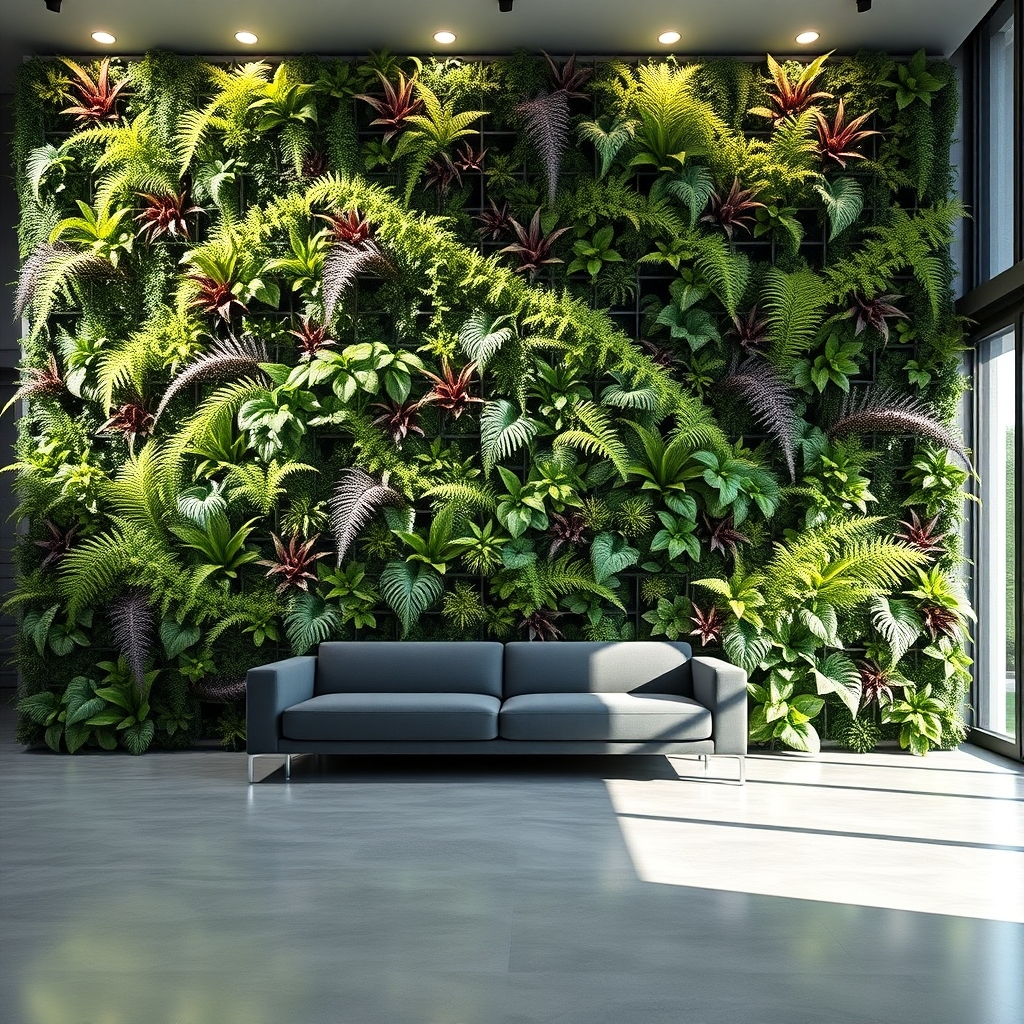
Vertical garden walls transform interior and exterior spaces into living art installations by creating lush, upward-growing displays of plants. These garden systems feature carefully arranged plants mounted on vertical surfaces, often incorporating multiple species with varying textures, colors, and sizes.
Plants are secured in modular panels, pocket systems, or specialized growing structures that include irrigation and drainage.
The distinctive feature of vertical gardens is their space-efficient design, allowing greenery in areas where floor space is limited. These living walls can span from floor to ceiling, featuring patterns and designs through strategic plant placement.
Common components include ferns, succulents, tropical foliage, and flowering plants, all maintained through built-in watering systems and proper lighting.
Beyond aesthetics, vertical gardens serve as natural air purifiers and sound absorbers while adding a biophilic element to modern interiors. They work particularly well in lobbies, office spaces, outdoor patios, and residential areas where traditional gardening isn’t feasible.
Minimalist Plant Arrangements With Clean Lines

Minimalist plant arrangements with clean lines focus on simplicity and purposeful placement of select plants, emphasizing negative space and geometric harmony.
These arrangements typically feature a limited number of plants with strong architectural forms, such as snake plants, ZZ plants, or single-stemmed specimens, positioned in sleek, modern containers with straight edges and monochromatic colors.
Key characteristics include:
- Uncluttered groupings with ample space between plants
- Angular or linear plant varieties
- Simple pot designs in neutral tones
- Balanced asymmetry
- Strategic placement against plain backgrounds
- Focus on form over abundance
- Precise pruning to maintain clean shapes
- Vertical or horizontal orientation that follows architectural lines
- Minimal use of accessories or decorative elements
This style creates a sophisticated, contemporary look that complements modern interiors while maintaining the organic benefits of live plants.
Classic Topiary Designs for Formal Settings
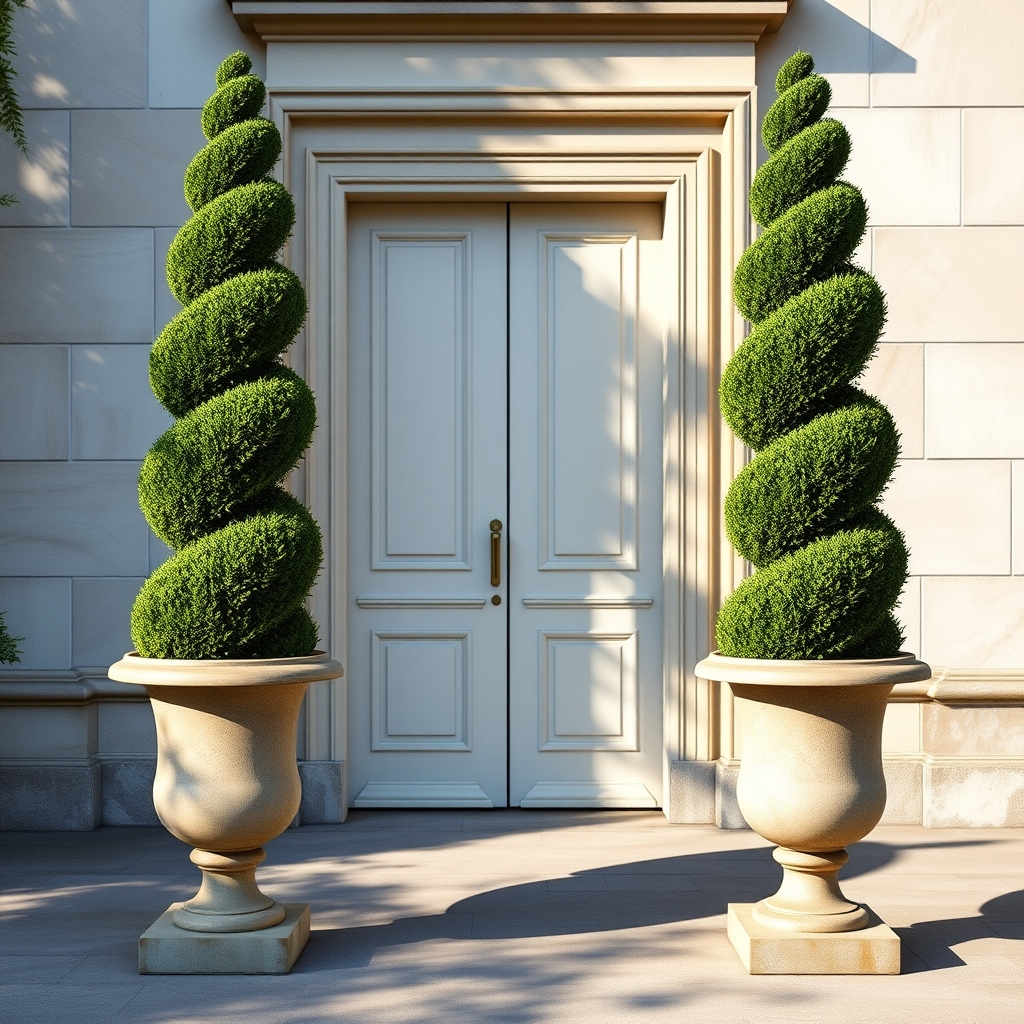
Classic topiary designs in formal settings feature meticulously trimmed and shaped evergreen plants, traditionally created from boxwood, yew, or privet.
These living sculptures take geometric forms like spheres, cones, spirals, and cubes, or more elaborate shapes such as animals and architectural elements.
The distinct characteristics include:
- Symmetrical, precise forms
- Clean, sharp edges
- Multiple tiers or layers
- Paired arrangements flanking entrances or pathways
- Maintained proportions and scale
Common applications showcase:
- Matching pairs along garden paths
- Focal points in formal gardens
- Container specimens on terraces
- Framing elements for doorways
- Centerpieces in parterre gardens
These designs require regular maintenance through careful pruning and shaping to maintain their formal appearance and structural integrity.
The style originated in European aristocratic gardens and continues to symbolize refinement and classical garden design.
Mixed Height Plant Groupings for Visual Interest
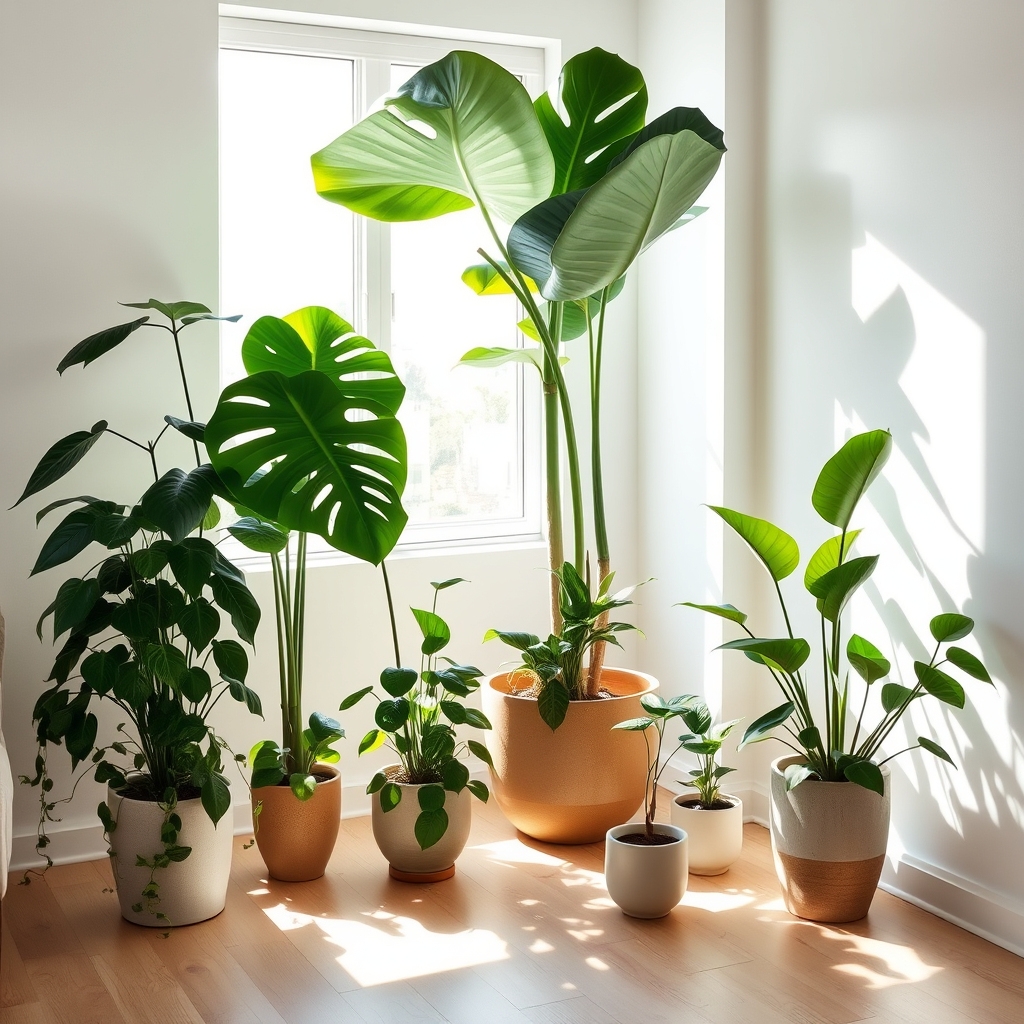
Mixed height plant groupings create dynamic visual displays by combining plants of varying sizes and statures within a single arrangement. Tall plants like fiddle leaf figs or palm trees serve as anchoring backdrop elements, while medium-height plants such as peace lilies or snake plants occupy the middle ground.
Shorter plants and trailing varieties like pothos or string of pearls fill the lower levels and edges of the grouping. This layered approach mimics natural plant communities and draws the eye through different vertical planes. The contrast between heights creates depth and dimension, preventing monotony in the space.
Effective mixed groupings typically follow a rough ratio of tall:medium:short plants arranged in a triangular or stepped formation, with taller specimens positioned toward the back or center.
Key characteristics:
- Multiple plant heights (3+ levels)
- Graduated sizing from back to front
- Complementary leaf shapes and textures
- Strategic placement for visibility of all specimens
- Natural-looking transitions between height levels
- Balance between vertical and spreading growth habits
Statement Plants as Natural Focal Points
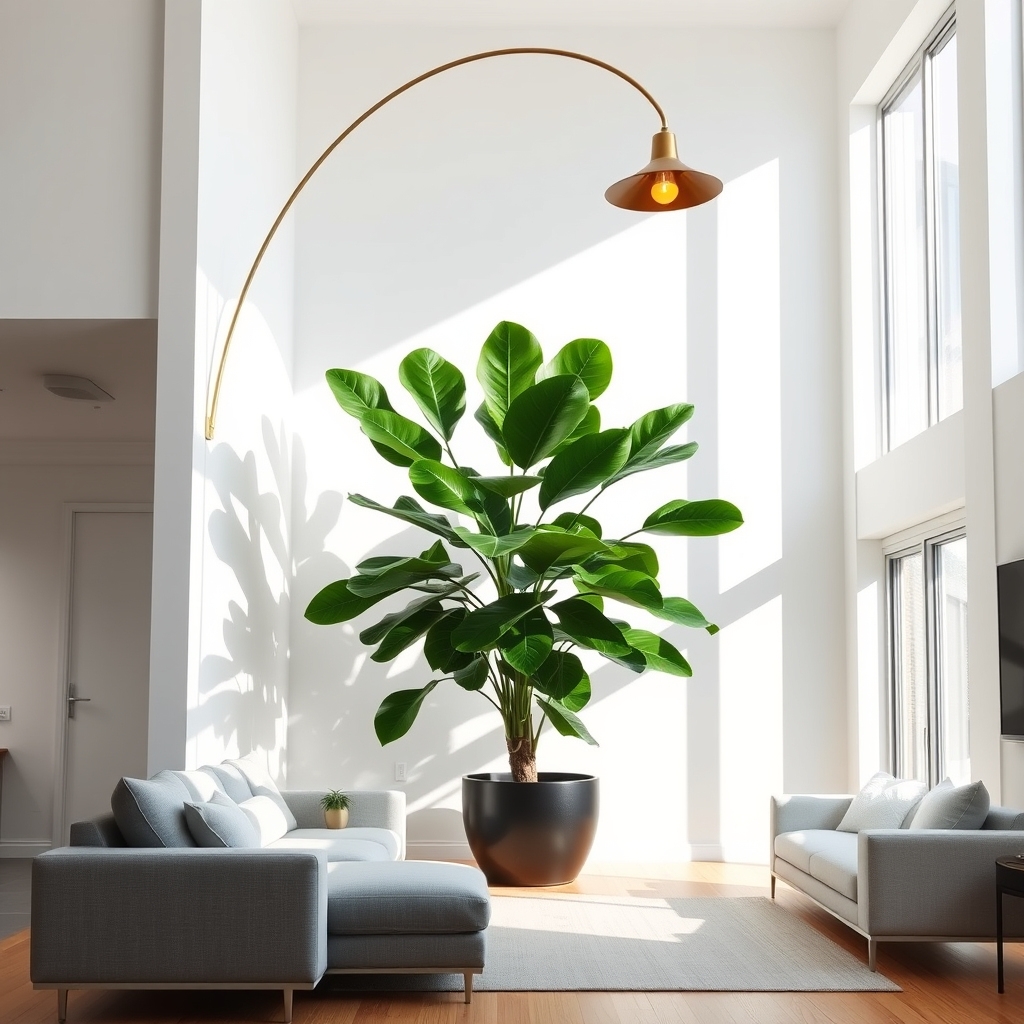
Statement Plants as Natural Focal Points act as dramatic, eye-catching specimens that command attention in a space through their distinctive characteristics.
These plants typically feature bold shapes, unusual growth patterns, striking foliage, or impressive size that naturally draws the eye and creates visual interest.
Common examples include:
- Fiddle leaf figs with their large, violin-shaped leaves
- Bird of Paradise with dramatic fan-like foliage
- Monstera deliciosa with distinctive split leaves
- Tall palm varieties reaching toward ceilings
- Japanese maples with sculptural branching
Key features:
- Stand-alone aesthetic impact
- Substantial size or height
- Unique architectural form
- Dramatic leaf patterns or colors
- Strategic placement in rooms
- Often displayed in minimalist settings
- Usually potted as single specimens
- Require adequate space to showcase form
These plants function as living art pieces, anchoring room designs and creating natural centerpieces that can define the character of an entire space.
Hanging Gardens With Trailing Botanicals
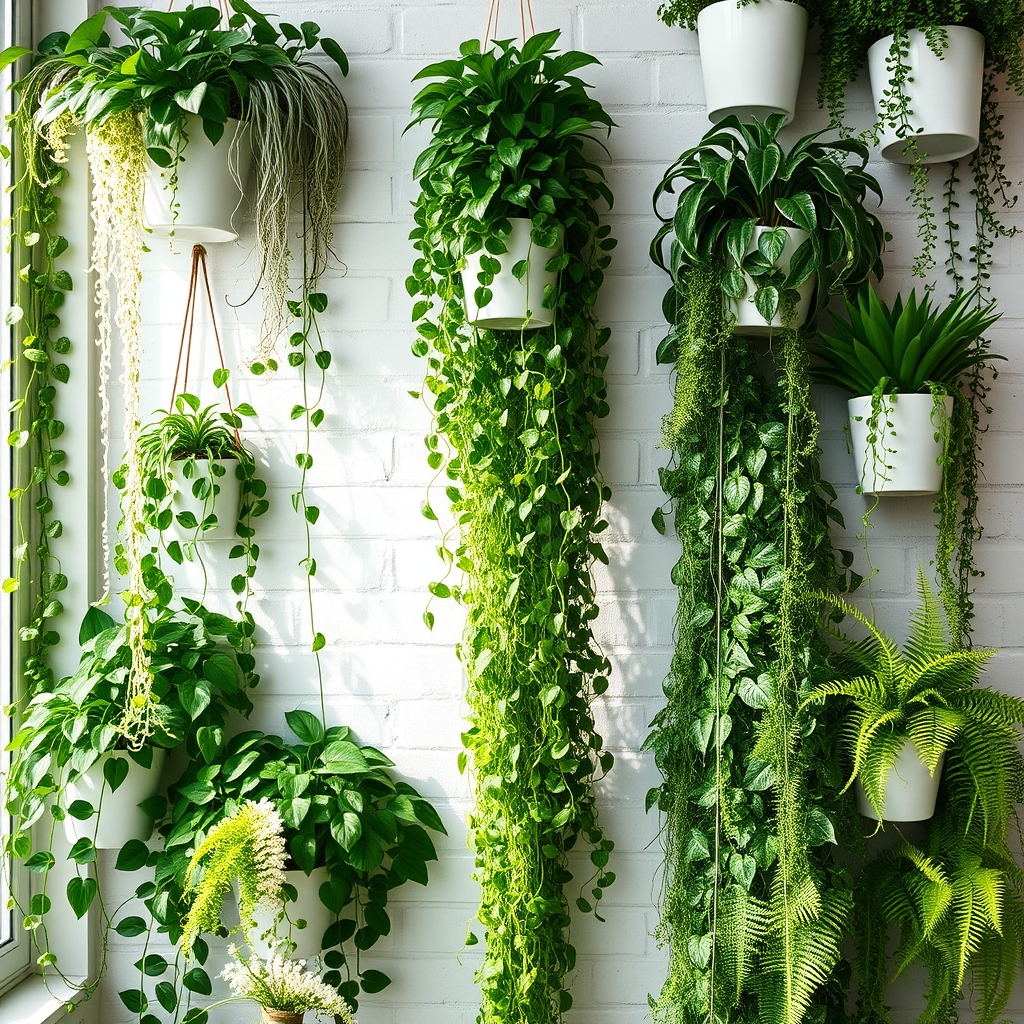
Hanging gardens with trailing botanicals create dramatic vertical displays where cascading plants flow downward from elevated planters, baskets, or wall-mounted containers.
These gardens feature plants with long, trailing stems and foliage that naturally grow downward, such as pothos, string of pearls, ivy, and trailing ferns.
The unique feature of these gardens is their ability to transform unused vertical space into living curtains of greenery, adding depth and movement to indoor and outdoor spaces while maximizing limited floor space.
The overlapping layers of trailing plants create a waterfall effect, with varied textures and lengths that can range from a few inches to several feet long.
Window Ledge Plant Collections
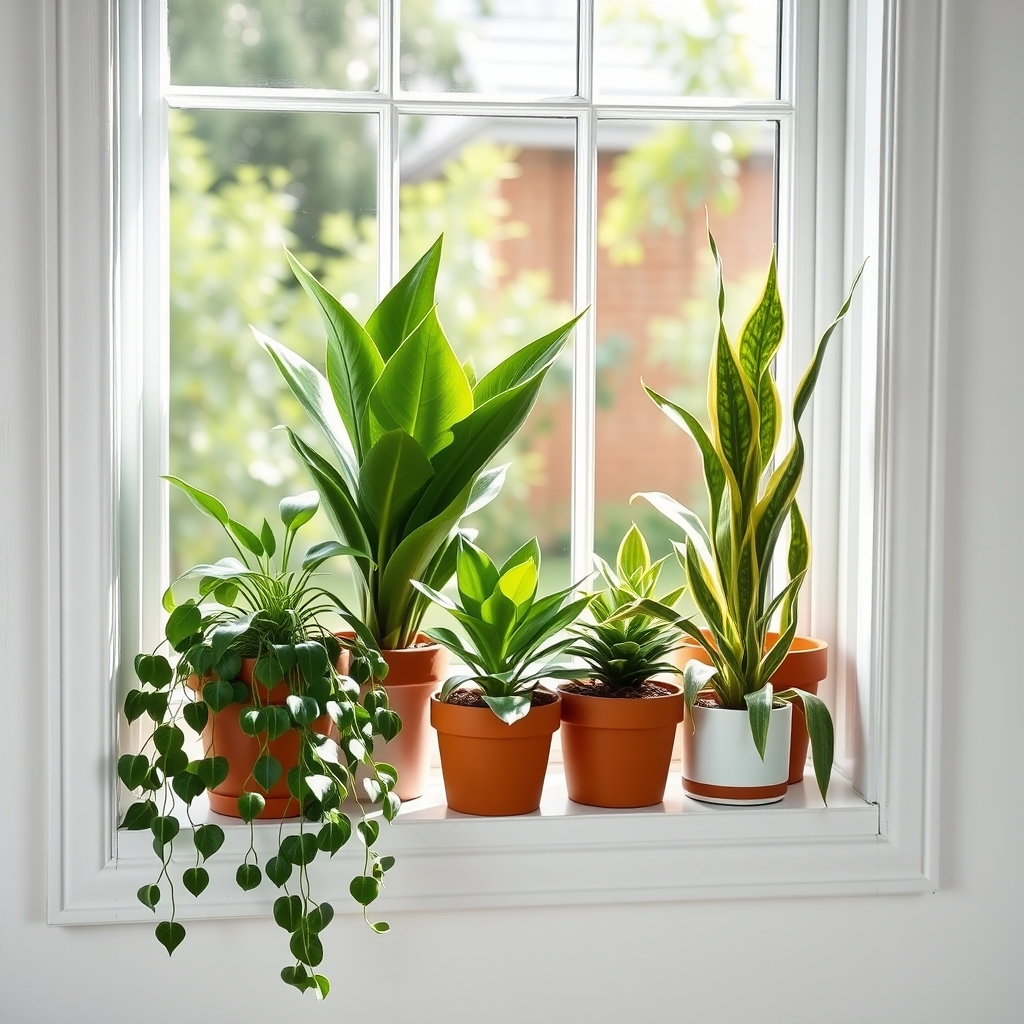
Window Ledge Plant Collections feature carefully curated arrangements of small to medium-sized plants displayed along interior windowsills.
These collections typically combine sun-loving plants positioned to maximize natural light exposure while creating an aesthetically pleasing green border between indoor and outdoor spaces.
Common arrangements include cascading plants like pothos or string of pearls paired with upright specimens such as succulents and small cacti.
Plants are often arranged in graduated heights, with taller specimens at the back and trailing varieties in front.
Containers are selected to complement both the home’s interior design and the window frame, frequently utilizing coordinated pottery styles or matching planters.
Key characteristics:
- Space-efficient vertical and horizontal plant groupings
- Light-appropriate plant selection based on window orientation
- Mix of growth habits (trailing, upright, compact)
- Coordinated container styles
- Seasonal rotation options to maintain optimal growing conditions
- Natural transition between indoor and outdoor views
Symmetrical Plant Placement for Balance
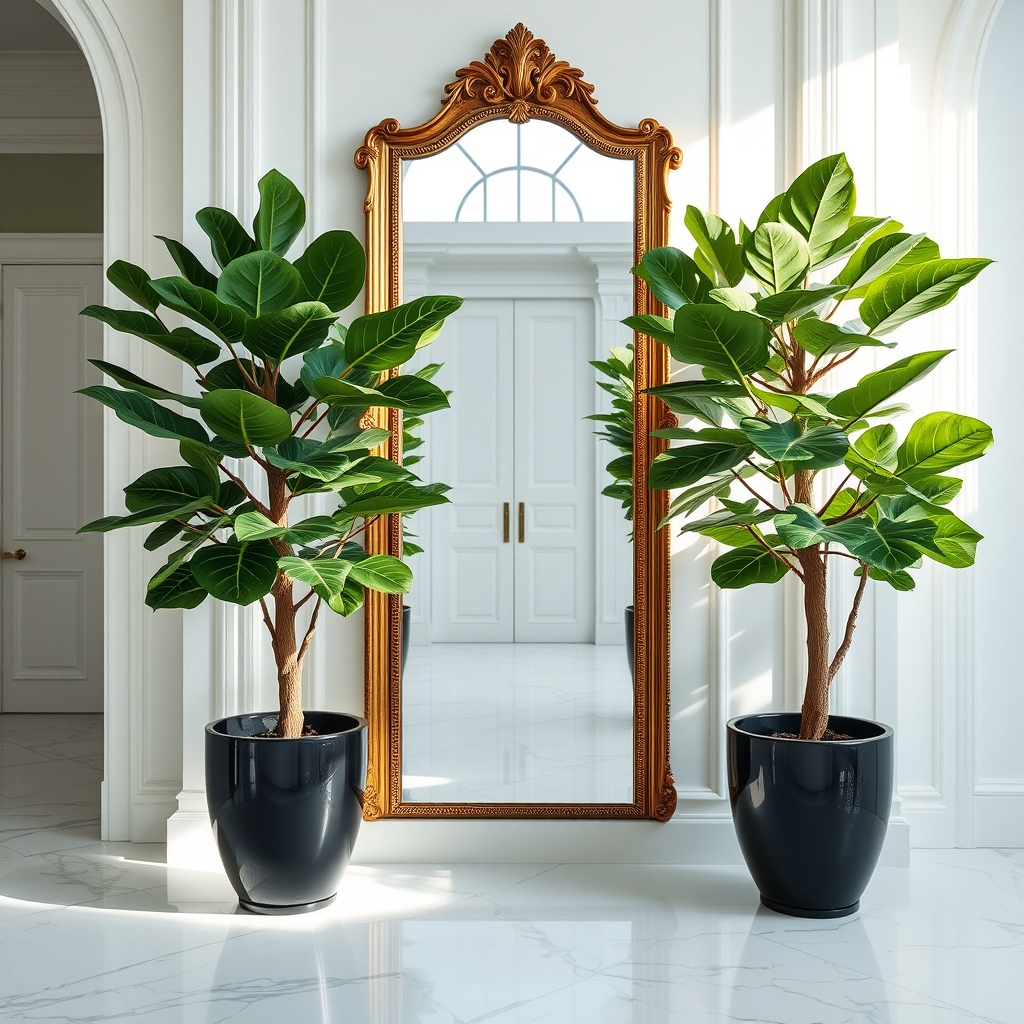
Symmetrical plant placement creates visual equilibrium in a space by positioning identical or similar plants in mirroring arrangements.
Plants are placed in corresponding locations on opposite sides of a focal point, doorway, or architectural feature, establishing a formal, structured appearance. This design approach typically involves using matching plant varieties, containers, and heights to achieve perfect balance.
Key characteristics:
- Identical plants positioned as mirror images
- Equal spacing between plant groupings
- Matching planters or containers
- Consistent heights and forms
- Central axis or focal point
- Formal, organized aesthetic
Common applications include:
- Framing entryways
- Bordering walkways
- Highlighting architectural features
- Creating grand foyer displays
- Defining outdoor garden spaces
- Designing formal living areas
The balanced arrangement naturally draws attention while providing a sense of order and stability to the overall décor scheme.
Indoor Trees as Architectural Elements
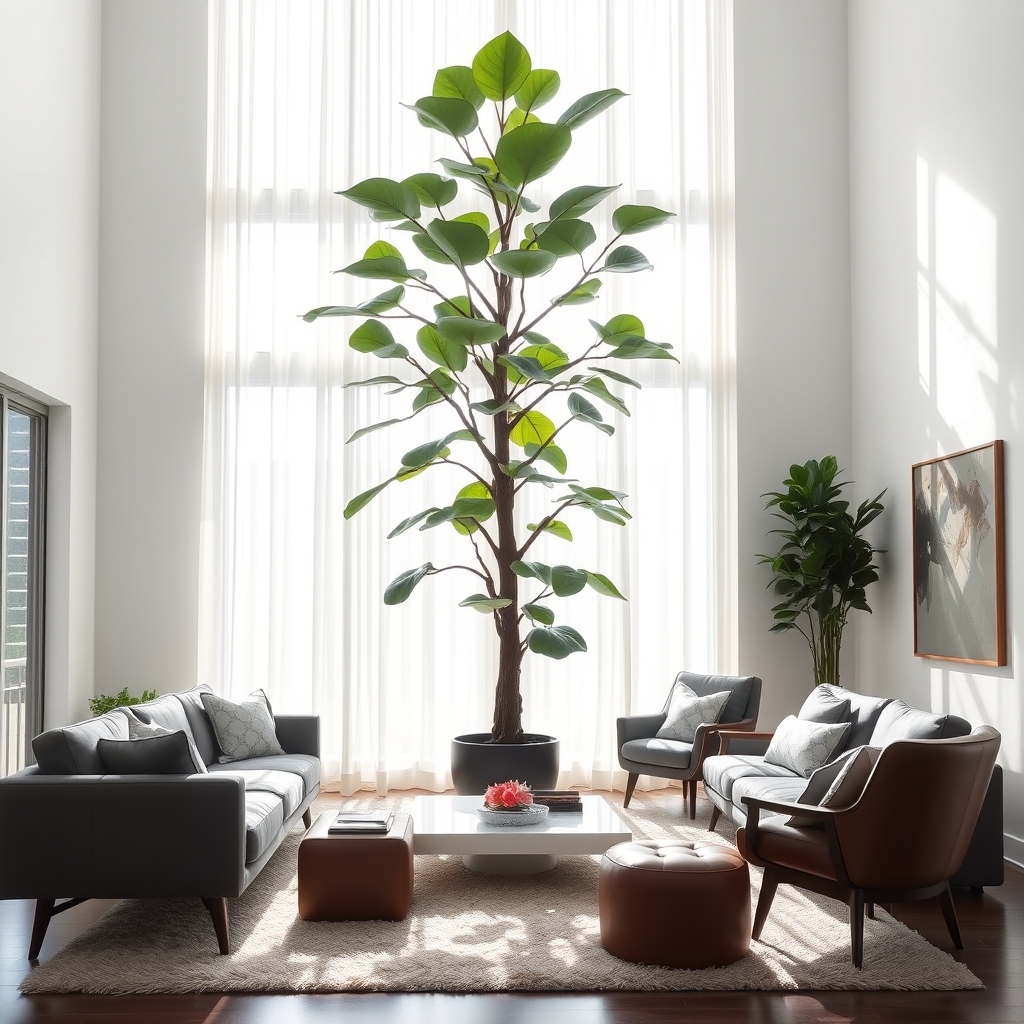
Indoor Trees as Architectural Elements transform interior spaces by acting as living structural components that define and enhance room layouts. These large-scale plants, typically reaching heights of 6-20 feet, create vertical interest and natural focal points within buildings.
Key characteristics:
- Function as natural room dividers
- Frame doorways and windows
- Define circulation paths and seating areas
- Add height variation to spaces
- Create organic sight lines
Popular varieties include:
- Fiddle Leaf Fig (Ficus lyrata)
- Bird of Paradise (Strelitzia nicolai)
- Dracaena varieties
- Indoor palm species
- Rubber Plants (Ficus elastica)
Design impact:
- Softens hard architectural lines
- Adds organic shapes to geometric spaces
- Creates visual weight and balance
- Establishes scale in high-ceiling rooms
- Provides natural screening and privacy
These living architectural elements require strategic placement near natural light sources and adequate ceiling height to achieve maximum visual impact while maintaining healthy growth.
